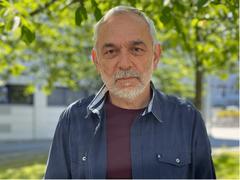URL: https://www.desy.de/news/news_search/index_eng.html
Breadcrumb Navigation
DESY News: Joint DESY-Ukraine project receives grant from the German Research Foundation
News
News from the DESY research centre
Joint DESY-Ukraine project receives grant from the German Research Foundation
A group of researchers from DESY and the Kharkov Institute of Physics and Technology KIPT(Ukraine) receives a grant from the German Research Foundation for studying the possibility to scrape off electrons from a booster synchrotron using a bent crystal. This might be of potential interest in view of future Test Beam Facilities.

An alternative mechanism for deflecting particle beams using a curved crystal was proposed at KIPT in the works of Anatoly Grinenko and Nikolai Shul’ga. This so called Grinenko-Shul’ga mechanism is based on stochastic scattering of fast charged particles on atomic chains of a bent crystal and is effective for both positively and negatively charged particles. Recent CERN experiments performed on secondary electron and positron beams at the SPS accelerator have successfully confirmed the main theoretical predictions.
The now received grant, which will last two years, will allow a detailed study of the effectiveness of the Grinenko-Shul’ga mechanism in relation to the conditions of the DESY accelerator in order to determine the optimal installation parameters for the implementation of a slow electron beam extraction.
The participants in this joint project are a group of scientists from the Department of Electrodynamics of High Energy in Matter at KIPT and a group of researchers from the DESY Accelerator Department.
“This joint project is an excellent example of combining the experience and knowledge of different groups of scientists from two countries to achieve common goals and mutual benefit,” says DESY scientist Gero Kube, spokesperson of the group. “It also provides an opportunity to support Ukrainian scientists in this difficult time, and to raise cooperation between two scientific centers to a higher level.”



